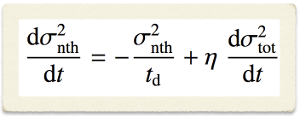|
The expansion of the present-day Universe is accelerating, and the
origin of this acceleration is unknown. It indicates either the
presence of “Dark Energy” - a mysterious energy component in the
Universe with negative pressure, or a breakdown of Einstein’s General
Relativity - how gravity works on cosmological scales. In order to
distinguish between these two explanations, we must measure how
structures in the Universe evolve over time.
Galaxy clusters (see Fig. 1) grow in mass by accreting material from
their surroundings over cosmic history. They are the largest known
gravitationally bound objects in the Universe and therefore are an
excellent probe of the growth of large-scale structures – and thus of
the origin of the cosmic acceleration. If we want to use galaxy
clusters as a probe of the acceleration, we need to accurately
determine their masses. Although these giants are dominated by
invisible “dark matter”, we can infer their total mass from
observations of the intracluster gas under the assumption of a
hydrostatic equilibrium between the gravitational pull and the gas
pressure, or more accurately the gradient of the gas pressure.
Observations of the intracluster gas, however, typically measure only
the thermal pressure of the gas. Non-thermal pressure, especially from
turbulent gas motion, has been recognized to provide an additional
pressure gradient and therefore has to be taken into account as
well. Neglecting this contribution would result in a deviation of the
inferred cluster mass from the true mass and in consequence this would
influence the study of cosmic acceleration.
So far, the amplitude of the turbulence pressure has mainly been
estimated with large-scale hydrodynamical numerical simulations. These
state-of-the-art simulations, however, yield quantitatively different
results when using different numerical methods. Moreover, they are
computationally expensive and do not lead to a direct physical
understanding of what is happening in the galaxy clusters.
Therefore, we took a different approach to this problem by gathering
physical insights about how turbulence arises and dissipates in the
intracluster gas. From this input, we formed a one-dimensional
analytical model of the non-thermal pressure contribution, which
describes the velocity dispersion due to turbulence at each radius as
the galaxy cluster grows in mass (Fig.2).
This new analytical model predicts that the non-thermal fraction of
the gas pressure increases towards cluster outskirts as it takes
significantly longer for turbulence to dissipate at larger distances
from the cluster centre. Another prediction is that the non-thermal
fraction is larger in clusters with higher masses and in clusters
observed at higher redshift (i.e. at earlier cosmic times), since they
grow faster which triggers more turbulence.
With the help of an existing model of the total pressure, the new
model also gives the thermal pressure as well as the biased mass
estimate derived from this thermal pressure gradient. If we compare
our results with observations of a population of galaxy clusters, the
predicted thermal pressure profile is in excellent agreement with the
data (Fig.3).
Thus, our model has passed an important observational test; in
addition we found qualitative agreement with simulation data. More
specific tests on the predicted mass and redshift dependence will be
performed both against observations and numerical simulations. If all
the tests are passed successfully, the physical understanding provided
by the new model will lead to a better determination of the cluster
masses. We can then use galaxy clusters as a competitive probe of the
origin of cosmic acceleration.
Xun Shi and Eiichiro Komatsu
Original publication:
Xun Shi, Eiichiro Komatsu,
"Analytical model for non-thermal pressure in galaxy clusters",
submitted to MNRAS
 arXiv:1401.7657 arXiv:1401.7657
| 



